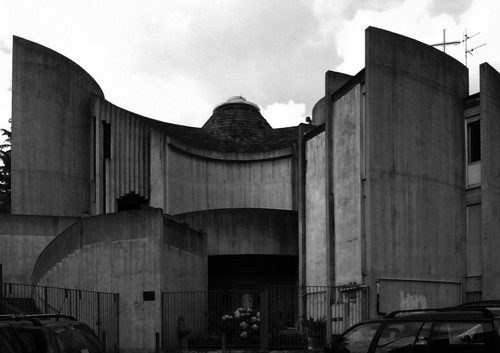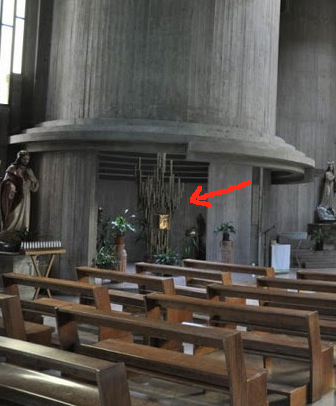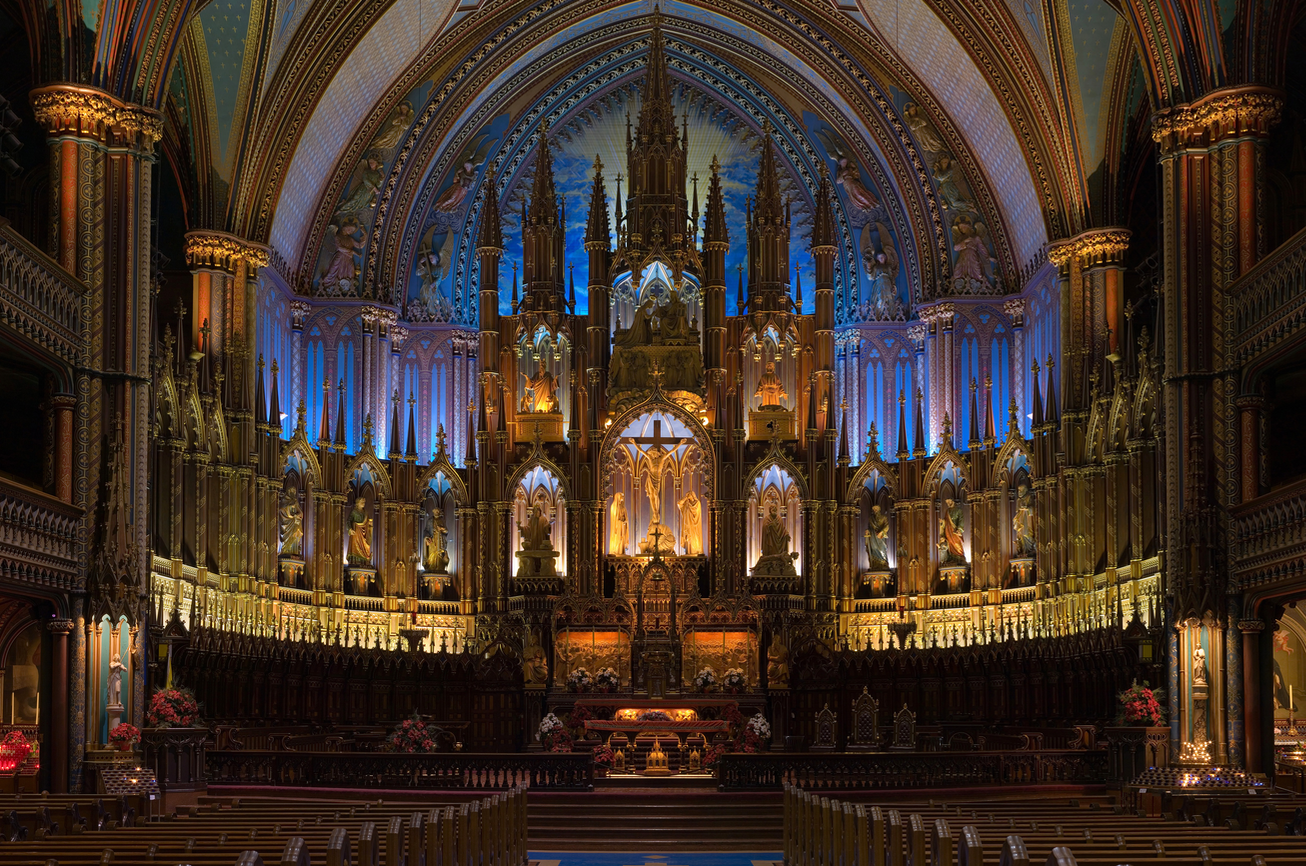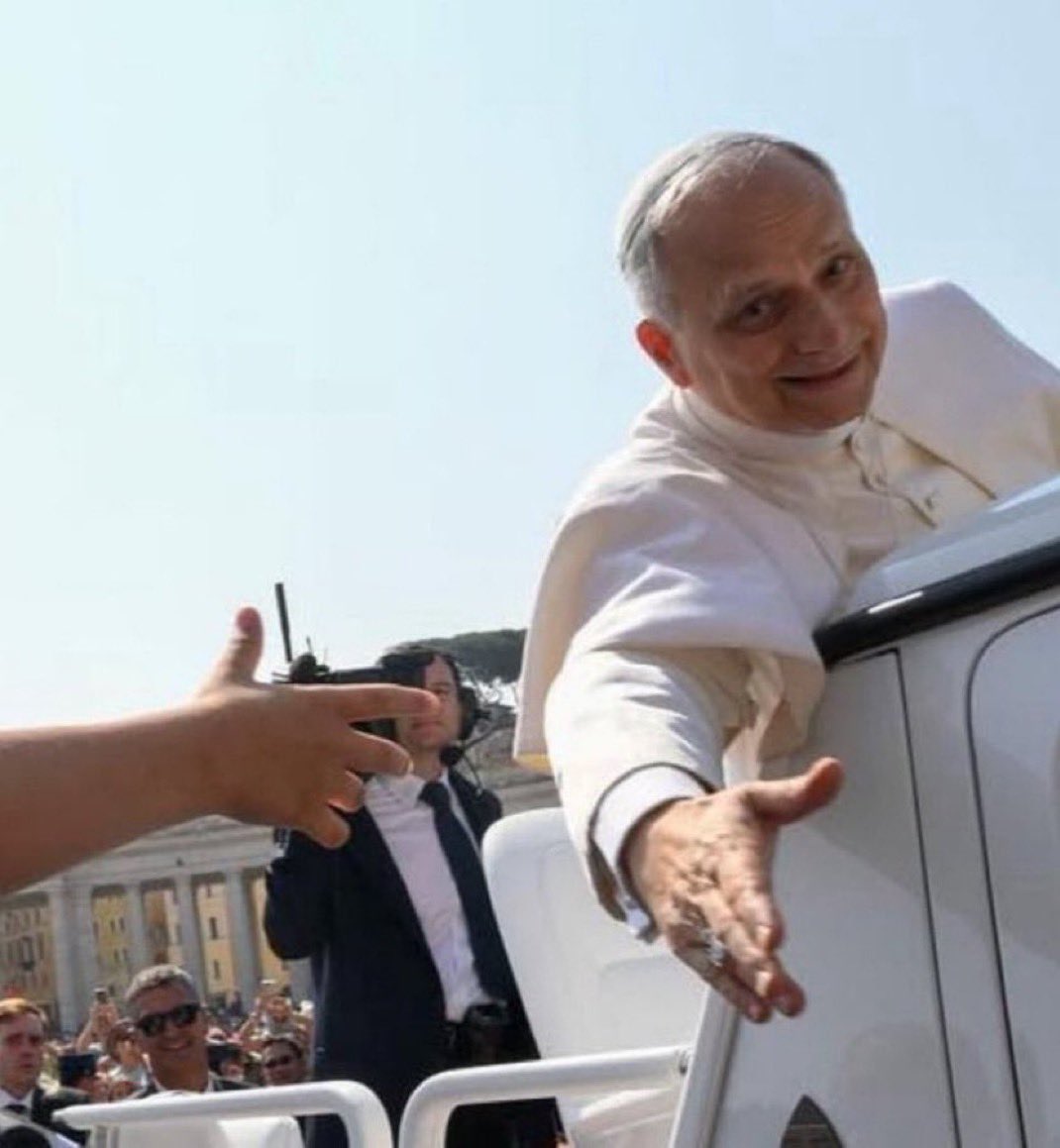“I can’t believe it’s not Catholic!”
Blasphemous Architecture:
Holy Family Church in Salerno, Italy

A “Catholic” church building that cries to Heaven for vengeance
In the Catholic Church, religious doctrine is not only expressed in words but also communicated through liturgical rites and sacred architecture. When the Novus Ordo religion was introduced at the Second Vatican Council in the 1960s to gradually replace Catholicism, it was a given that this new theology needed not only a New Mass but also new church buildings to go along with it:
And nobody putteth a piece of raw cloth unto an old garment. For it taketh away the fullness thereof from the garment, and there is made a greater rent. Neither do they put new wine into old bottles. Otherwise the bottles break, and the wine runneth out, and the bottles perish. But new wine they put into new bottles: and both are preserved.
(Matthew 9:16-17)
The new religion of Vatican II could not fit into the traditional Catholic framework — not into its catechisms, not into its liturgy, and not into its church architecture. Therefore, it had to go — all of it. Gradually but systematically, the Modernist ecclesiastical authorities overhauled every aspect of the Catholic religion and called it “renewal.”
Almost 55 years after the close of the council, the proof is in the pudding: A massive apostasy from the Catholic religion as it was known and practiced until the death of Pope Pius XII, swept the Catholic world. (Don’t believe it? Keep reading this blog.) Though some of the externals of Catholicism have been retained, what is officially known as “Catholicism” today is a completely different religion from what was known under that same label until Vatican II. Today’s “Catholicism” is in fact mostly a blend of Catholicism, Modernism, Protestantism, and Freemasonry, first forcefully imposed upon the unsuspecting faithful by Giovanni Battista Montini, “Pope” Paul VI.
This is especially visible in the new churches that were built during and after Vatican II — there is virtually no resemblance to traditional Catholic churches anymore, and for good reason: They express a vastly different, novel theology.
A stellar example of the architecture of such Modernist churches is found in what is called “Holy Family Church” (Chiesa della Sacra Famiglia) in Salerno, Italy. The picture at the top of this post shows the outside — below you will find a video of the inside:
The most frightening and hideous place in the church is reserved, of course, for our Lord Himself (if not in fact at least in intent):

The “Tabernacle”
The architect of Holy Family Church is Paolo Portoghesi. Designed in 1968, the building was completed and dedicated in 1974, when the same architect began work on a mosque.
You can view many more images and read more about this “church” at these links:
- Unofficial Facebook page: Sacra Famiglia Church
- Wikipedia entry (Italian): Chiesa della Sacra Famiglia (Salerno)
- The Architecture of Sacra Famiglia Church “explained” (Italian)
Modernist church architecture embodies the Novus Ordo religion perfectly: It is hideous, cold, banal, stupid, barren, dull, earthly, irreverent, and profane. It is therefore also a perfect fit for the Novus Ordo Missae, the counterfeit “Mass” which Paul VI imposed in 1969.
By contrast, genuine Roman Catholic architecture is beautiful, majestic, reverent, awe-inspiring, sacred — and always raises the mind to heavenly things, for which reason alone it refreshes many a soul. Real Catholic churches are designed to be a worthy house for the Lord, such as this extremely goregous church in Canada:
Notre Dame Catholic Church in Montreal (click image for larger version)
– currently occupied by Modernists, but largely left intact
(Photo by DAVID ILIFF. License: CC BY-SA 3.0)
Thus the difference between the Catholic Church and the Modernist Vatican II Sect can be seen not only in their contradictory teachings and disciplines, but also in the very architecture that gives expression to their respective beliefs.
The hideous Modernist churches, together with the awful “New Mass” of Paul VI, proved to be the perfect mix to catapult the New Religion into the souls of every church-going Catholic in the 1960s and beyond. Few people ever read the conciliar documents or the new catechisms — it was the new liturgy and terrifying church architecture, more than anything else, that made the Novus Ordo religion so successful.
Lex orandi, lex credendi — how we pray shows what we believe.
Image sources: mapio.net / unknown (internet) / Wikimedia Commons (David Iliff; cropped)
Licenses: fair use / fair use / CC BY-SA 3.0






No Comments
Be the first to start a conversation